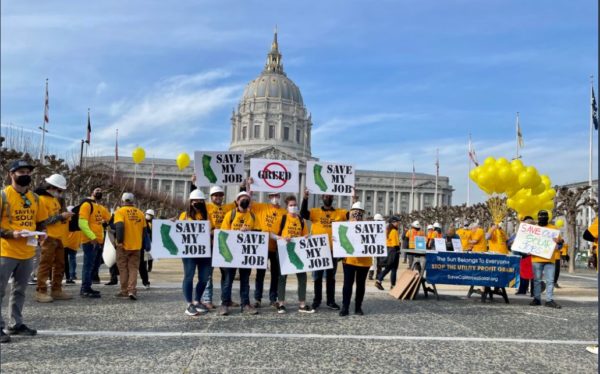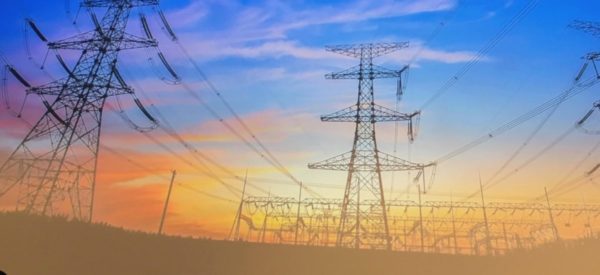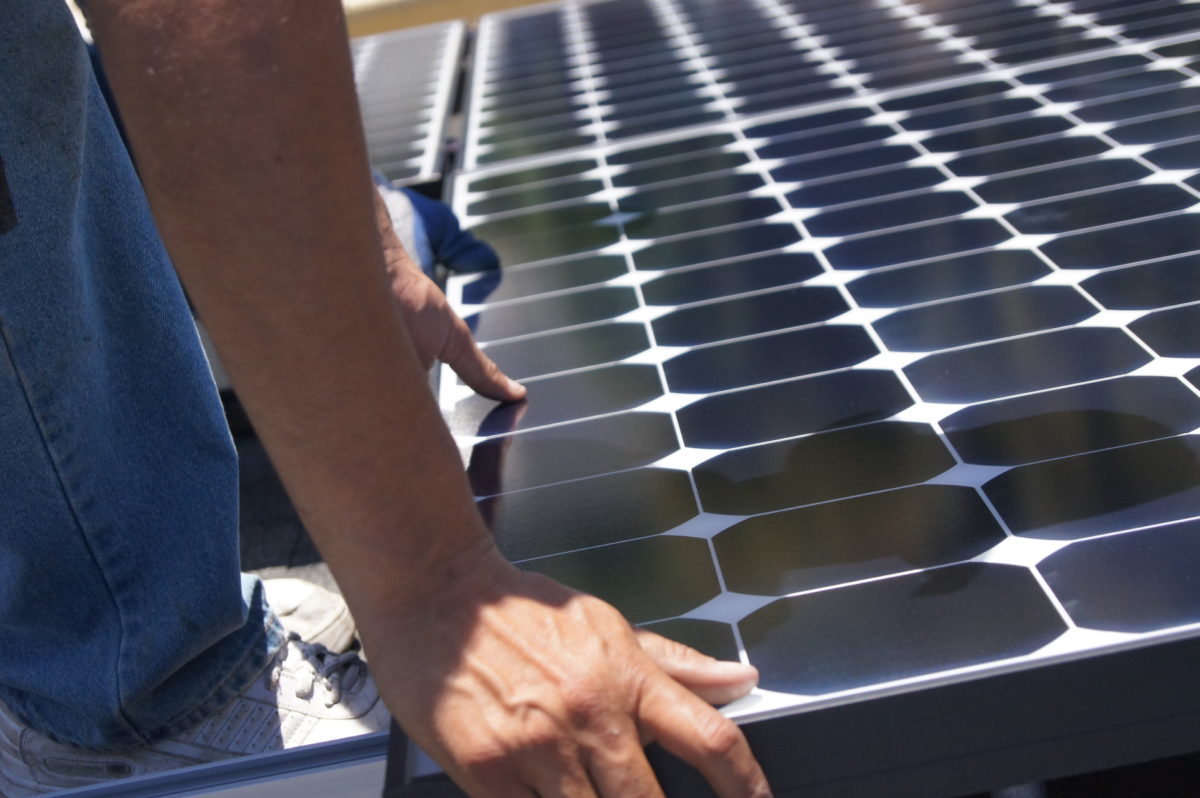Three investor-owned utilities, Pacific Gas and Electric (PG&E), Southern California Electric (SCE), and San Diego Gas and Electric (SDG&E) contributed a combined $1.7 million in 2020 to the Affordable Clean Energy for All coalition, reports Yahoo Finance. The group was focused on cutting the value of rooftop solar by dramatically cutting payments for excess solar energy generation, and adding a fixed $8/kW fee per month, a cost of $64 a month to a typical 8kW system owner.
The NEM 3.0 proposal was met with heavy resistance from industry leaders, environmental and working groups, grid experts, and solar-supportive Californians. With a rooftop solar economy half the size of the entire United States potentially on the line, these groups actively fought the proposal, which was ultimately delayed indefinitely.

Image: CALSSA
One of the central foundations of the utility-supported coalition is combatting the “cost shift”, which is the argument that paying for excess solar generation at a retail rate results in higher costs for the utility, which, in turn, leads to higher costs for non-solar customers. California utilities claim current solar customers impose a cost of $2.8 billion to the grid, adding $200 to every non-solar customer’s bill every year.
Under that framework, the group built NEM 3.0, a proposal that was estimated by EQ Analysts to cut the value of solar by 57-71% for an average solar owner. The California Solar and Storage Association (CALSSA) said that $4 billion in economic activity, 65,000 jobs, and thousands of small businesses were at stake under the proposed decision.
Cost shift?
Sixteen state-level studies, according to the Solar Energy Industries Association, have disproven the cost-shift argument, as has a national study, completed by Lawrence Berkeley National Lab. Berkeley found that 40 of the 43 states and Washington D.C. with net metering programs have a negligible cost increase attributed to solar.
CALSSA said the foundational ideas of the cost shift argument are flawed. First, the idea that energy not purchased from a utility is a direct cost shift on all other ratepayers is a flawed concept. CALSSA argues that facilities with solar, even without energy storage, self-consume at nearly 50%. This means they are drawing 50% less power from the grid during bright, sunny times, where air conditioners draw high energy loads and the grid is stressed. This causes supply and demand relief, which CALSSA said would cut the impact of the cost-shift as presented in half. As more batteries are added, self-consumption raises, further providing relief for the grid.

Image: Energy Estate
Image: Energy Estate
The second flaw CALSSA notes is that utilities assume fixed costs going forward, particularly in the buildout of more infrastructure. The utility profits from the buildout of transmission, and can justify more buildout and more peak demand charges during times of high energy need on the grid, said CALSSA. By blocking rooftop solar, the utilities effectively keep demand high, especially at crucial high-demand times. California’s investor-owned utilities have spend roughly $20 billion on infrastructure and taken in $20 billion in profits in the last twenty years.
CALSSA also said the utilities improperly calculate the future value of solar in its cost-shift model. Most solar arrays are built to last 25 years or more, but the utilities use a nine-year assumption when calculating future value. It said the utilities also improperly value the present value of rooftop solar systems, using historical data from a much different grid and market profile.
Finally, CALSSA argues the coalition’s evaluation misrepresents costs of solar fields vs. rooftop solar. Affordable Clean Energy for All, claims non-solar customers pay $0.25/kWh for rooftop solar instead of $0.03/kWh from a utility-scale solar field. Comparing wholesale prices versus retail energy credits is based on false equivalencies. A home buying electricity from a solar farm located hundreds of miles away is different than crediting a local school’s rooftop for power shared in the same neighborhood. Transporting the electricity across hundreds of miles of wires into Los Angeles causes efficiency losses and causes large costs in supporting the infrastructure that delivers it. With all these arguments taken together, CALSSA said the utility’s own cost shift argument dissolves from a $200 per year cost to about $25 per year, or $2.08 per month.

Image: Environmental Working Group
CALSSA argues the “real cost shift” is the one utilities place on ratepayers by perpetuating the cycle of infrastructure buildout to deliver power from distant sources. Transmission and distribution costs have climbed 66% in PG&E territory alone since 2016, and unpaid bills from transmission construction and maintenance among utilities exceed $19 billion.
Long-distance transmission causes increased risk of wildfire, not only further costs, but taking the lives and homes of many Californians. In 2017 alone, PG&E’s downed transmission lines were found to be the cause of $7.5 billion in damages. Recently, a new Californian state agency established by the Newsom administration called the Office of Energy Infrastructure Safety announced it granted PG&E a special provision to recoup wildfire costs from electric ratepayers by raising rates.
Responding to the news of the $1.7 million combined contribution to the Affordable Clean Energy for All coalition, Environmental Working Group president Ken Cook said, “If there is one thing PG&E and the other big utilities do well, it is to buy influence and political cover. This front group, masked as some grassroots coalition, has provided that cover as utilities try to quash rooftop solar.”
This content is protected by copyright and may not be reused. If you want to cooperate with us and would like to reuse some of our content, please contact: editors@pv-magazine.com.









The utilities and CPUC are so corrupt – taking money from customers to hurt customers and hang on to their monopoly.
Thank you for telling us the truth about the utility “front machine” “The Affordable Clean Energy for All coalition”. I thought they were trying to make solar power more affordable but instead making a more profitable to the utilities. So many non-profits have believed the lies and signed onto the belief that rooftop solar was cost shifting huge amounts of money to the poor rate payer. The Poor rate payers already get a 20% discount if they sign up for CARE and that is 16% of residential rate payers in California. You cannot trust any utilities that makes its money by selling or using fossil fuels. Only 30% of the electricity used in California is by homes or residences. The rest if used by industry, commercial businesses and governments for buildings heating and lighting and things like traffic signals and streetlights. of those 30%, only 10% have and use their own solar. 10% 0f 30% is 3% of the energy comes from rooftop solar. How could just 3% cause a 50% shift in costs?
“You cannot trust any utilities that makes its money by selling or using fossil fuels.” How TRUE!
There is a kernel of truth to the IOU cost-shift argument, and rates ought to mitigate for it. What is appalling is the massive overkill sold to the PUC as the draft NEM 3.0. Gulling red state regulators is easy; California is smarter than this.
You are correct. The $8.00 per kilo watt of solar and 1 to 5 ratio of energy returned for energy given is over kill. if they had said a $2.00 per kilowatt monthly service fee for using the grid as a battery and a 2 for 1 ratio of energy given for energy received but with allowing up to 200% of the previous year’s use be allowed to be installed rather than the 115% currently allowed, it would also encourage EV charging and home battery backup to gain more from the power produced. The only thing in the Currently proposed NEM-3.0 was the allowed 200% of previous years use being allowed in new systems. When Tesla proposed my Tesla Solar Glass roof, they originally offered a 13,000-watt system but that was way over the allowed 115% so i ended up with a 7800-watt system instead.
Why is electricity provided to California through for profit companies beholden to shareholders instead of co-ops beholden to their customers the citizens of California?
Because California loves Corporations taking the lead, so the lazy governments or coops do not have to. We have a few cites that did this like Alameda, but they are still beholding to the corporate transmission lines and corporate power stations for their power. Under Republican Governor George Deukmejian and Pete Wilson, the utilities were de-regulated because they were told it would open up competition. instead, it opened up higher prices and greed and locked in the exiting for profit companies to have a strangle hold on the California Economy. The power of the utilities in California now want to kill rooftop solar panels through NEM-3.0 saying it is only the rich property owners that have solar, and they need to pay more to help offset costs that are being shifted to the poor. The fact is, the poor already get a discounted program call CARE, and the rich and middle-class ratepayers are paying more for that program already. The fact that rooftop solar is cutting into their expected profits and is becoming so affordable that even the lower middle-class homeowners can afford them, they are trying to kill rooftop solar, in the state, using the CPUC and other non-profit organization to spread the LIE that the poor are paying for the rich homeowners solar panel system through higher rates for the non-solar customers.
I live in Texas and had plans for solar. Texas power companies are already gouging customers with high rates and media fears of cold weather to justify high cost.If large like California Florida, Arizona are already lining up to take money from people that has already made solar investments you can believe Texas is right there with the other states utility companies. For that reason I will cancel my solar install,because I can clearly see they will continue to lobby to keep us in there pockets.
Instead of cancelling, check and see if they will sell you an Off-grid system that will only power your home and not send any power to the grid. Tesla offers the off-grid solution and so do other companies so don’t be put off by pushy salesmen that only do on-grid inverters and not off-grid plus battery solutions. Under the current NEM programs batteries do not pay off but if the utilities shat charging customers to be connected, the cost doubles for on-grid systems and the off-grid systems look less expensive in the long run plus give back up power when the grid is down.
Put in an off-grid system and tell them to take a hike. Yes, unfortunately, it’s expensive. But eventually, as residential system costs continue falling and utility bills keep increasing, there’ll come a day …
That’s exactly what the electric companies want you to do: cancel solar and only buy from them. This is counterproductive.
I doubt (hope) NEM 3.0 will pass. But even if it does it may backfire on utilities for the following reason. When you use NEM what you are really doing is using the utility as a free battery. When you generate surplus you send it to the grid, and when it is dark you ask for it back.
If NEM 3.0 passes what may happen is the users will buy their own battery and store their surplus themselves, then simply disconnect their panels from the grid. Thus disconnected , the utilities will not be able to dictate how the panels are used or charge money related to them.
If that happens, users will be only using grid power when their batteries run down. In effect utilities will move from sharing your power to being nothing more than a backup generator.
what you have described here is 1:1 Net Metering: “using the utility as a free battery. When you generate surplus you send it to the grid, and when it is dark you ask for it back.”// NEM: Net ENERGY Metering is a different animal altogether. NEM 3.0 proposes to buy excess kWh not consumed in real time ie 15min increments at Avoided Cost ( Wholesale= small fraction of Retail). I do agree that tapered credits over time & “BS” fees ARE drawing more consumers to Invest in Energy Storage Solutions, especially when Retail Tiered grid prices are 25 to 45+c/kWh. AJT; Energy & Policy Analyst
You are only partially correct. The new fees created in NEM 3.0 draft language still apply if you have battery storage to accompany your solar system, so the fees are still based on the amount of energy produced and consumed by the homeowner, as well as your rates for energy used off of the grid. You are correct though about under NEM 2.0 any solar projects without battery storage are using the grid as a battery of sorts. The other issue is with the excess power produced, the utilities are obligated to purchase it at the lowest available price on the grid. For instance, I live in Nor. Cal. and PG&E is my provider, my avg. credit received is around 4-4.5 cents per kw/hr, yet when I purchase power off the grid I am paying 41 and 50 cents a kw/hr as of 3-1-2022, and the connection fee is around $8 and some change, but there are several other fees on top of that as well. I am still flabbergasted the PUC granted the huge rate increases they did to PG&E, effective in March, and they have already applied for another rate increase for next year of an additional 22-25%, this is on top of the potential NEM 3.0 changes and the increase in fees they will get from that. Keep in mind the PUC is a board of Gubernatorial appointees, many of whom are retired politicians and regulators, so many of you who have been playing the political party game, this is a single party state and the PUC is a Democrat appointed board of partisan allies. Here is a link from CBS 8 from San Diego regarding the current board: https://www.cbs8.com/article/money/amped/closer-look-at-cpuc-board-members-who-approve-sdge-rate-hikes/509-28bd8b6e-8470-43d7-924f-90d0e03900c4
As you can see, I’m not just making this up to take a political shot, I am truly trying to inform here. All of us have a shared interest in seeing the state continue to move to renewable energy, but to do so in a manner which doesn’t bankrupt Californians who are just normal, hardworking folks trying to make ends meet.
Subsidies for excess energy production sound great, but does forcing your non-solar neighbor to fund those subsidies sound fair to anyone? Is the excess energy really returned to the grid or is that just another feel good claim?
Electrons follow the path of least resistance. The path to the grid, through the step-down transformers that feed a neighborhood is a higher resistance than going into the house next door or across the street to power a refrigerator or light bulb. it is more than “Feel Good” it does real good in pushing back on the utilities that make their money selling fossil fueled energy from their dirty power plants. NEM-3.0, as proposed, is just more corporate greed making money for executives and shareholders of that company.
I have a home solar system. As far as I know I don’t get any pay for over production and it costs $10/ mo. to stay hooked to the grid. So what is PGE talking about?
NEM 3.0 and the utilities are so corrupt and their arguments are completely idiodic. They sit there and claim the cost to maintain the grid is being disproportionately pushed to the non-solar and low income individuals when the truth is, the utilities are greedy and their revenue is going down. The exec and shareholders need their payouts. This has nothing to do with saving the consumers money! If it’s really about the consumers, does that mean that the price for electricity is going to go down if this passes? I don’t think so.
Plus, as everyone knows, if you’re on NEM 2.0, you’re already paying at least $10-$12/month just to be connected to the grid. And on top of that, you’re paying NBC’s (Non-bypassable charges) every hour you’re connected to the grid. So NEM 2.0 users ARE supporting the grid!
If NEM 3.0 passes, I will not be getting solar. It’s that simple. Solar is attractive when the payback period is under 8 years. If NEM 3.0 passes, the payback period will be at least double that. The closer and closer the payback period is to the warranty of the equipment, it simply doesn’t make sense. And many of those warranties only cover the product itself, not the labor costs to replace items if they go bad, which add to the total bill.
I don’t know what the percentage is of people that need extra work done if they’re going solar (ie roof upgrade or electrical panel upgrade), but I have to assume that percentage is pretty high. For me, my electrical panel needs to be upgraded and the existing conduit is too small for an upgrade so PG&E has to re-trench and run new conduit and wires. PG&E wants a $1500 down payment before they’ll even give me a quote on how much the total will be to do that. What a joke, I’m not paying a non-refundable $1500 down payment just to get a quote on what the total bill will be. Just spit-balling it though, my guess, based off the price of wire and PG&E’s insane labor charges, it’s going to easily be $8k to run new wire for a panel upgrade. I’m willing to pay that if I’m on NEM 2.0, but I’m definitely not doing that if NEM 3.0 passes.
Here’s the other thing that PG&E and the other corrupt utilities aren’t comprehending; if they’re complaining right now while they’re collecting $12/month and NBC’s from all the solar people, what’s going to happen when everyone gives them the finger and goes off-grid? If they push people to go off-grid that means PG&E is collection no money anymore. Solid state battery technology is advancing very rapidly and it’s the future. They’re going to be at least 3x the storage capacity, they’ll physically be smaller and lighter, and they’re cheaper to produce. An all around win-win! If the utilities main argument for NEM 3.0 is to raise more money to pay for the grid, what the heck are they going to do when the battery tech is cheap enough to go off-grid? They’ll have absolute NO money coming in. And at that point the price of electricity is really going to skyrocket for those still connected to the grid. The utilities logic is completely backwards! They need to make solar cheap enough to keep people from going off the grid. Jacking up solar is just going to push people completely off the grid and thus raising prices for all the remaining connected people. It’s not really that hard to understand!
California is supposed to be “SUPER GREEN” as well. If NEM 3.0 passes, it will force people to go off grid, which means a lot more batteries and more importantly, California loses out on all that free “excess” energy people are producing; which means more coal, nuclear, etc. At least this way, anything I’m over-producing will go back to the grid for others to use and thus saving resources and pollution across the board.
NEM 3.0 is lose-lose across the board and the utilities arguments in favor of it are idiodic at best. It really comes down to one thing. Money, and the utilities are greedy! It’s all about utility profits, not about consumers saving money!
I agree that PG&E will use their monopoly to extract as much money from their customers as possible. It appears they have very low morals, such that they will lie if it helps them stuff the NEM 3.0 solar tariffs down your throat. They will twist the truth and pit one group of customers against another, just like crooked politicians do, if it helps pass rules that kill Californian’s desire to install solar on their homes. The good news is that PV panels and energy storage continue to fall in price. The economics may eventually make it easy to go completely off grid for a majority of home owners, especially in sunny states like California.
Hi Dan, yes, that’s the thing. If I go completely off grid, then I no longer have to worry about trying to run a new PG&E line to my house, thus saving me $8k, which is essentially the cost of one Tesla power wall. The utilities are cutting their own throat with NEM 3.0.
Josh, you probably don’t need an upgrade to the PGE service. Your solar backfeed is typically 20% of the service panels capacity, so there is plenty of capacity in the wires. Because of the 20% rule, you are being told that you need to increase the panel size, and PGE wants to increase the wire size. There are exceptions to the rule that allow you to increase the solar size without increasing the wire size or the main service panel. Talk to some more competent solar installers.
Example: 100A panel restricts solar backfeed breaker to 20A. grid—-100A main panel—-20A solar
To add 40A solar breaker requires 200A panel. grid—200A MSP —-40A solar.
Alternatively: grid—–100A MSP with 100A breaker feeding 200A subpanel —–40A solar
The maximum backfeed to the grid can never be greater than 40A, which is fine on 100A wires.
NEC (National Electric Code) allows the alternative.
Please publish the names and addresses of the individuals in this group of phonies posing as some kind of environmental group who go this money, and perpetrated this corruption so the angry mobs of low income people that have just been forever priced out of helping to save their own environment and having a chance to afford a better life will know where to riot. This revolution WILL be televised. I can’t wait to watch it.
Oh, and also, this removes one of the main reasons for going solar in an odd way: The federal tax credit for connecting to the grid. Ok, so they want you to bear the cost of adding batteries, with a 10 year life span to ease the cost of purchasing power during peak times, which is basically what we have to do to work around this mess, however, go ahead and install the system and disconnect from the grid like we do in remote locations. As it has been said earlier, the cost of connecting to the grid in some cases becomes your budget to go completely off grid. Then you are independent, not paying them for the use of their grid, and not caring about them in any way. If nothing else, NEM3.0 is an incentive to dump the powers that be, pun intended. I’ve built 2 solar systems in the woods and saved myself thousands of dollars and the risk of power lines through the trees starting a wild fire. I don’t have a PG&E bill. I can’t tell you how gratifying that is. If you can afford to get solar installed without having to take one of the loan deals, which basically charge you 100K for a 50 K system over 25 years, and then you don’t own it, then by all means, DO IT, connect to the grid and add batteries later. make more money off these crooks and thieves. When the grandfathered NEM2 goes away in 25 years, then you can just disconnect from them and give them nothing. Laugh at them when their grid goes down. I already do! When the power goes out, and my friends and neighbors ask me, “How come you still have lights on? Are you running a generator???” I just laugh.